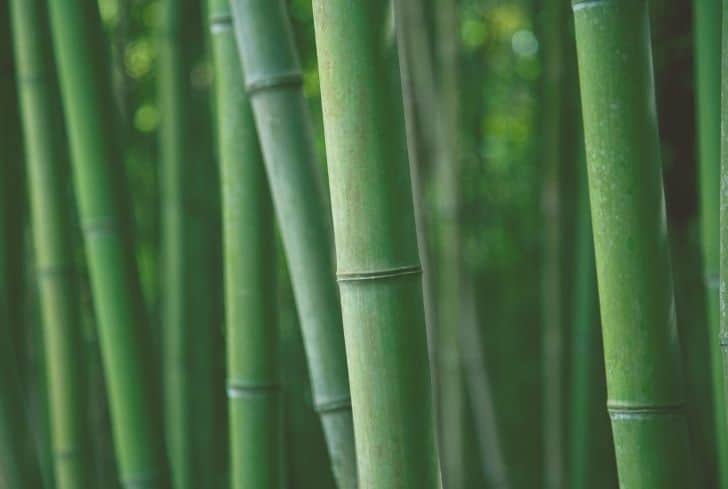Bamboo: The Green Invader Triggering Legal Disputes in Victoria, BC
.
Need help with your yard? Get your free quote today!
Get a Free Quote!
Bamboo is often prized for its lush, exotic appearance and rapid growth. Yet for many homeowners in Victoria, BC, this very vigor has turned bamboo into a green invader—spreading unchecked across fences, into neighboring properties, and, in some cases, sparking heated legal disputes. Below, we’ll explore how bamboo becomes a source of conflict, why it’s particularly challenging in coastal regions, and what property owners can do to mitigate the risks.
1. Why Bamboo Thrives in Victoria
Victoria’s temperate climate—mild winters, moderate rainfall, and cool summers—creates near-ideal growing conditions for many types of bamboo. Gardeners initially plant it for a fast-growing privacy screen or a striking ornamental feature. However, while the climate and soil are perfect for bamboo growth, these same factors also enable rampant spreading.
Key Reasons for Vigorous Growth
- Adaptable Rhizomes: Most invasive bamboo varieties spread via underground runners (rhizomes). Once established, they can send up new shoots several yards away from the original clump.
- Year-Round Mild Conditions: Even in winter, Victoria rarely hits extreme temperatures, allowing bamboo rhizomes to remain active below the soil.
- Minimal Natural Predators: Bamboo is not a native plant in BC, so pests and diseases that might keep it in check in its native environment are absent here.
2. From Garden Delight to Neighborhood Nuisance
The very characteristics that make bamboo desirable—its height, density, and speedy growth—can become liabilities when it crosses property lines. Complaints often involve:
- Encroachment: Rhizomes can travel beneath fences, walkways, and driveways, emerging on a neighbor’s side of the fence.
- Damage to Structures: As bamboo rhizomes spread, they may push against foundations, patios, or other hardscapes, causing cracks or structural issues.
- Blocked Views and Sunlight: A tall, dense stand of bamboo can obstruct a previously open view or cast shade on a neighbor’s garden, reducing their own enjoyment and potential plant growth.
3. Legal Disputes and Local Considerations
In some cases, disputes over invasive bamboo can escalate to legal battles or formal complaints. While Victoria does not currently have a city-wide bylaw specifically regulating bamboo, there are general nuisance and property encroachment regulations that may come into play.
Potential Legal Grounds
- Trespass and Property Damage: If bamboo roots or shoots cross a boundary and damage a neighbor’s property, that neighbor may seek compensation or demand removal.
- Nuisance Claims: Under common law, a property owner has the right to enjoy their land free from unreasonable interference (including invasive plant spread).
- Municipal Bylaws: While there may not be a bamboo-specific bylaw, some municipalities within Greater Victoria have “noxious weed” or “invasive plant” regulations that could include bamboo in certain cases.
Because the legal framework around bamboo is still evolving, outcomes can vary case by case. However, owners are increasingly finding themselves obligated to contain or remove bamboo stands under court or local authority orders if they cause documented harm to neighboring properties.
4. Strategies for Responsible Bamboo Management
Whether you’re planting bamboo for the first time or trying to rein in an existing patch, proactive measures can prevent conflicts with neighbors.
Choose Clumping Varieties
- Clumping Bamboo: Spreads more slowly via short rhizomes that stay close to the parent plant.
- Running Bamboo: Sends out long, horizontal rhizomes that can travel several meters from the original stand. If you do opt for running bamboo, take additional containment steps.
Rhizome Barriers
- Physical Barriers: These specialized barriers, typically made of plastic or metal, are buried several feet deep around the bamboo’s perimeter to prevent roots from spreading beyond the intended area.
- Regular Inspection: Even with barriers, periodic checks are crucial. Rhizomes can sometimes breach or climb over barriers if not well maintained.
Above-Ground Management
- Prune Shoots: Cutting new shoots as they emerge can deplete the plant’s energy and slow its spread.
- Mowing: Where feasible, regularly mowing or cutting down young shoots in lawn areas can curb uncontrolled growth.
Chemical Methods
- Targeted Herbicides: In severe cases, or when removing established groves, some homeowners choose selective herbicide applications. However, always follow local regulations and consider environmental impacts before using chemical solutions.
Professional Removal Services
- Safe Excavation: Hiring professionals to excavate and properly dispose of rhizomes can be the most effective way to eliminate severe infestations.
- Replanting with Non-Invasive Species: After removal, consider replacing bamboo with native or slower-growing alternatives to prevent re-infestation and support local biodiversity.
5. A Path to Peaceful Coexistence
While bamboo can create friction between neighbors and even lead to legal challenges, responsible management and proactive communication often prevent issues from escalating. If you already have bamboo on your property:
- Talk to Your Neighbors: If you suspect or notice bamboo spreading beyond your yard, open a dialogue about a shared solution.
- Seek Professional Advice: Consulting a landscaping expert or arborist familiar with local conditions can clarify the best containment or removal methods.
- Check Local Rules: Be sure you understand your municipality’s stance on invasive plants, including any guidelines for disposal or fines.
Conclusion
In Victoria, BC, bamboo’s rapid growth and invasiveness can transform it from a coveted ornamental plant to a source of neighborhood disputes. By understanding the plant’s nature, choosing the right variety, and implementing preventative measures—such as rhizome barriers and regular maintenance—homeowners can enjoy bamboo’s beauty without stepping into legal trouble. For those already grappling with encroachment or disputes, swift action, open communication, and, if necessary, professional advice are key to preserving both property values and community harmony.
